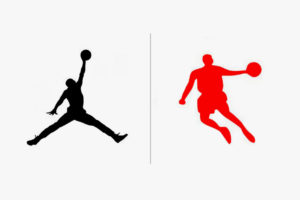Monthly Archives: March 2020
Businesses and the Coronavirus: Adapting to a Health Crisis
Background Information
COVID-19, otherwise known as coronavirus, has drastically reshaped the world we live in. In the United States alone, there are over 150,000 confirmed cases of coronavirus. Businesses throughout the country have utilized strategies of working from home and, relevantly, universities have made the transition to online instruction. Some businesses and entrepreneurs have had to reshape their business models to fit the current needs of the community. With much of the country having stay-at-home orders, and the fear of leaving your home being very real, businesses have transitioned their services to adapt to these concerns. The technology industry has underwent changes, but so too has every day services like fitness and grocery shopping.
Fitness
Gyms throughout the country have closed its doors following statewide stay at home orders. However, the gym and fitness sector are bringing workouts to your home. For example, Planet Fitness, one of the largest chain gyms in the country, began streaming online workout classes on March 16. Monday through Friday, Planet Fitness offers a free, daily virtual fitness class on the Planet Fitness Facebook page for people to access. The videos can also be found on YouTube to be streamed. Smaller gyms and workout programs also offer online fitness classes, including AR30 which is a virtual fitness program that offers virtual gym sessions via, our favorite, Zoom.
Furthermore, a Facebook spokeswoman stated, “By March 18, the number of home workout posts on Instagram from the United States had increased by more than five times compared with just a few days earlier.” Another spokeswoman for YouTube provided, “On YouTube, average global daily uploads of videos with “workout at home” in the title increased more than 57% from March 10 through March 15.”
Pick-up and Delivery Services
Restaurant and grocery delivery services have also seen a huge increase. Many restaurant dining rooms are closed, but restaurants still are able to offer carryout and delivery. Instacart, a company that offers home deliveries of groceries and other goods that are ordered through an app, announced that it plans to “bring on an additional 300,000 full-service shoppers across North America over the next 3 months to meet the increasing customer demand for online grocery delivery and pickup in the U.S. and Canada.” Furthermore, Instacart, Walmart Grocery and Shipt hit a record for daily downloads of their apps. Instacart has seen an increase of 218%, Walmart Grocery increased 160%, and Shipt saw an increase of 124%.
Other Examples of Businesses and the Coronavirus
- Zoom stock is up 20% in the last month.
- Promobot released a robot in New York City that asks people questions to determine whether they have symptoms of the coronavirus. (See link 7 for a video).
- There has been an increase in companies attempting to integrate thermal imaging capabilities in their products. This essentially allows someone to have their temperature taken from a distance.
- High-tech disinfectant devices have seen an increase in popularity. For example, Emist offers an electrostatic disinfectant to combat the coronavirus. (See link 9 for a photo and more information on this contraption).
As we can see, communities and businesses are coming together and adapting to the health crisis we are currently in. With some reworking, businesses are attempting to stay afloat when no one is leaving their homes by adapting to what consumers need.
Questions
- How do you anticipate legal services to adapt overall?
- How do you believe the pandemic will bolster or hinder entrepreneurship and innovation going further?
- A few weeks ago we had a presentation on work from home options (“WFH”). How will businesses converting to WFH during the pandemic impact WFH options going forward?
Links
- https://www.forbes.com/sites/janicegassam/2020/03/29/how-these-female-entrepreneurs-are-using-technology-to-thrive-amidst-covid-19/#2e29f135276e
- https://www.arcgis.com/apps/opsdashboard/index.html#/bda7594740fd40299423467b48e9ecf6
- https://www.usatoday.com/story/money/2020/03/16/planet-fitness-offers-free-home-workout-classes-online/5062122002/
- https://www.washingtonpost.com/sports/2020/03/27/people-welcome-online-workouts-fill-gap-left-by-shuttered-gyms-studios/
- https://news.instacart.com/expanding-our-community-of-household-heroes-a-thank-you-from-apoorva-mehta-instacart-ceo-3e596b5d05a9
- https://techcrunch.com/2020/03/16/grocery-delivery-apps-see-record-downloads-amid-coronavirus-outbreak/
- https://www.youtube.com/watch?v=dn_fBlyn7YI
- https://www.vox.com/recode/2020/3/11/21174720/coronavirus-amazon-robots-air-purifiers
- https://www.emist.com/
- https://www.consulting.us/news/3945/ey-five-strategies-for-businesses-to-lessen-coronavirus-impact (Header photo).
“Copyright troll”? Or tireless advocate for photographers?
I saw this article on Law360 and had to post it …
Michael Jordan’s Slam Dunk in Trademark?–Michael Jordan vs. Qiaodan Sports Company
My Zoom Presentation Link Attached below:
Introduction video:
https://www.youtube.com/watch?v=rB5Nir_LMhA
Please note: the video is dated August, 2015 and therefore it does not address China’s Supreme Court’s final judgment dated December, 2016 on this case.
Slides Presentation:
Michael Jordan Trademark Case Slides
(This is the slide I made for my presentation and I will try to upload my video record tomorrow. I decided to videotape my presentation and send Professor a Google drive link.)
English Resources:
- https://www.wsj.com/articles/SB10001424052970204778604577240991687647450
- Beginning of the Battle
- https://www.finnegan.com/en/insights/blogs/incontestable/michael-jordans-great-win-in-china-or-is-it.html
- https://www.bbc.com/news/world-asia-38246196
- https://www.allaboutipblog.com/2017/04/michael-jordan-qiao-dan-is-me-michael-jordans-trademark-fight-in-china-over-his-name-rights/
- Mayer Brown’s Comments on this case.
Chinese Resources:
- http://www.csrc.gov.cn/pub/zjhpublic/G00306202/201111/t20111121_202116.htm
- Qiaodan Sports Company’s IPO predisclosure
- https://www.chinacourt.org/article/detail/2017/04/id/2822651.shtml
- Summary of the final judgment
And if you want a brief synopsis of Aereo…
And look what’s happening to cable TV…
Winning the battle and losing the war …
Here’s a quick synopsis of the battle between Napster and the music industry … and some of the unforeseen consequences
https://www.theguardian.com/music/2019/may/31/napster-twenty-years-music-revolution
https://www.cbsnews.com/news/after-napster-the-music-industry-winds-up-humming/
https://www.newstatesman.com/2019/01/is-the-music-industry-dead
The Name, Image and Likeness Debate…
By Alexandra Ursino
Background Information
Name, image, and likeness (NIL) are typically seen as the right of publicity, which is a right that provides people with a cause of action against anyone who makes a commercial use of their name, image, likeness, or other indicia of identity.”
In October 2019, California Governor Gavin Newsom signed the Fair Pay to Play act into Law the legislation went against NCAA guidelines and allows college athletes in the state to profit from their name, image, and likeness beginning in January 2023. Several other states bean to draft or propose similar legislation in 2019.
At the end of October, the NCAA Board of Governors voted unanimously to allow student-athletes to be paid for the use of their NIL once rules are decided on the opportunities. The Board asked each division to create rules between now and January 2021.
According to Sports Illustrated, two companies are at the forefront of this new industry and have already developed business models based on potential NIL benefits.
TWO COMPANIES
Studentplayer.com is a crowdfunding platform that is similar to gofundme.com and allows anyone to donate funds to a specific collegiate athletic program or player position. The people who can donate include college sports fans, alumni, and large companies. The point is that if teams and athletes accept the money when the NIL rules permit it, players will make a video or social media post in exchange for endorsing an advertiser, company, or studentpplayer.com itself.
The founder of the company, Zachary Segal, says that “the website will “democratize” the college sports economy “and compared the process to making political campaign contributions. “All donations, listed by institution and sports team will be made public on the website.
The website has already taken off. A $10,000 donation has already been made by Tocowarranty.com, which is an auto repair insurance company. The company has donated to 10 Division I football teams for each of their starting quarterback positions, including LSU, Clemson, and Oklahoma. Minnesota State University at Mankato requested its institution be taken off the website due to concerns about how prospective donations could impact the eligibility of players under current NCAA rules for NIL benefits. The founder believes that the university is “mistaken” because the funds will be held in escrow until regulations and laws are in place that permit college athletes to be paid. A member of Oklahoma’s athletics department stated: “I’ve never seen anything like this” “They aren’t using any of our students’ name, image, and likeness at this time, and why someone would contribute to this is beyond me.” Contributions so far have totaled over $103,000.
Nameimagelikeness.com provides legal representation to athletes. It was started by an Illinois family practice lawyer and former Division 1 men’s basketball player for Saint Louis University. The company is designed to help athletes navigate sponsorship deals and provide other opportunities to profit from their NIL, such as fan autograph exchanges and social media advertising.
The website states that its clients will be given full access to newly available opportunities to monetize their publicity and elevate their status as the admired, elite athletes that they are.
Questions to consider:
- Companies aren’t yet sure about what the state and federal law swill look like, as well as what NCAA guidelines will be. Without this guidance, is it smart to create a business model without any regulatory guidance?
- Can you bet on potential profits that way?
- Would you start a business without knowing the regulatory guidelines or issues?
- What would be the biggest assumptions you make about this new industry?
- Are there any major assumptions these two companies are making?
- How would you compare the two businesses?
Sources
- https://rightofpublicity.com/brief-history-of-rop
- https://nameimagelikeness.com/
- https://studentplayer.com/
- https://www.insidehighered.com/news/2020/01/14/market-rights-college-athletes-name-image-likeness-emerging
- https://www.cnn.com/2019/10/29/us/ncaa-athletes-compensation/index.html
- http://www.ncaa.org/questions-and-answers-name-image-and-likeness
- https://www.si.com/college/2019/10/30/ncaa-name-image-likeness-announcement-takeaways-questions
Working from Home and Beyond
Working Remotely
Perhaps one of the largest new trends in the modern workplace is the ability to work remotely. While work from home (“WFH”) options have been around for quite some time, there is a new trend emerging which promotes “working from anywhere” (“WFA”). Advances in technology and streamlined services have allowed for increased flexibility in the way people work, both inside and outside of the office. According to a 2017 Gallup poll, 43% of employed Americans spend at least some time working remotely every week. While the concept of working remotely is not necessarily new, it has gained quite a bit of traction as employers have begun capitalizing on its benefits. In fact, several recent studies suggest that the ability to work remotely increases productivity. Additionally, WFA and WFH programs might reduce some structural overhead costs. On the employee side, the uptick in remote working options is said to be driven by the increase of Millennial and Gen-Z workforce and changes in the labor culture. Now, WFA and WFH programs are used as a recruiting tactic. As with any major shift in the workplace, there are many benefits and drawbacks that present unique challenges to different employers in different industries.
Harvard Business Review Study: WFO v. WFA
While WFA has grown out of WFH programs, there are some differences in the benefits and challenges presented with a workforce that is located “anywhere”. Harvard Business Review conducted a study in which they studied the effects of a WFA program initiated in 2012. The study followed patent examiners at the USPTO. The focus of the study was to analyze the productivity of these examiners after the switch from WFH options to WFA. The results of this study showed a 4.4% increase in productivity after the switch. Additionally, there was no significant increase in the amount of work revision that needed to take place after the switch. Moreover, there was no indication that the patent quality decreased after the switch. Harvard Business Review estimated that the 4.4% increase in productivity represents up to $1.3 billion in added value to the U.S. Economy. As a fringe benefit of the WFA implementation, the study also observed that there was an uptick among WFA employees relocating to places with lower cost of living. When the WFA employees relocated while retaining their original salary, they effectively gave themselves a raise without any economic impact on their employer.
Companies Capitalizing on WFH and WFA
An interesting feature of this trend is the technology supporting WFA and WFH options. Companies such as Slack and Zoom have streamlined remote communication. Both of these companies have been hugely successful featuring multibillion-dollar IPOs. In addition to streamline communication and remote connection, other companies such as WeWork and Regus have capitalized on creating flexible workspace that can be used to support an alternative workplace configuration.
Benefits of WFH/WFA Option:
- Flexibility
- Continuous Access to Work Materials
- Increased Efficiency
- Increased Productivity
- Health
- Reduced Absenteeism
- Greater Retention of Talent
- Recruitment
- Workplace Content
- Greater Autonomy
Challenges of WFH/WFA Option:
- Organization
- Collaboration
- Miscommunication
- Reduced Oversight
- Less Sense of Community
- Continuous Access to Work Materials
Questions:
- How can Entrepreneurs capitalize on the WFA movement?
- What challenges does the WFA movement present for Entrepreneurs?
- How are law firms reacting to the WFA movement?
- Is WFA good for everyone? If not, why not?
Links:
https://www.entrepreneur.com/article/346848
https://hbr.org/2019/08/is-it-time-to-let-employees-work-from-anywhere
https://news.gallup.com/businessjournal/206033/america-coming-workplace-home-alone.aspx
https://www.entrepreneur.com/slideshow/302413
https://www.entrepreneur.com/article/339613
https://economics.stanford.edu/sites/g/files/sbiybj9386/f/alternative_work_arrangements.pdf
https://www.wired.com/2011/05/microsoft-buys-skype-2/





